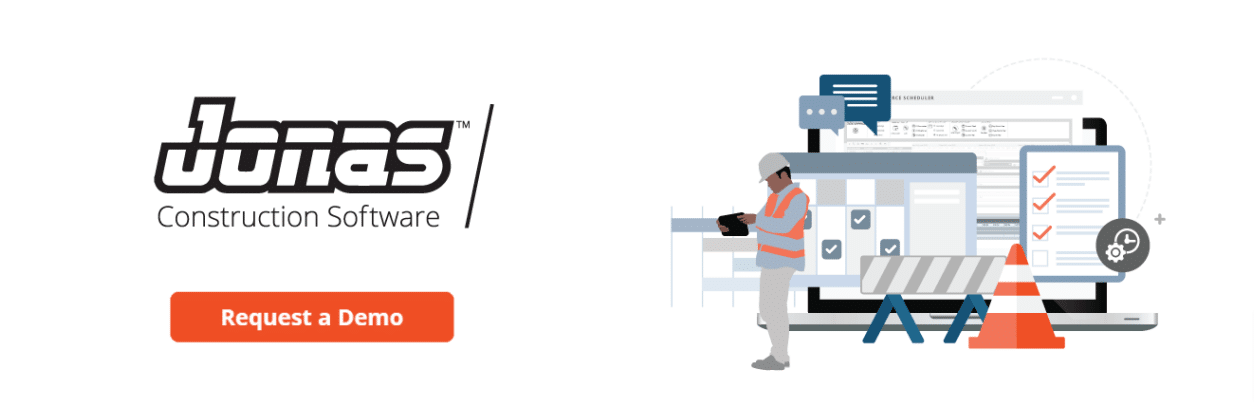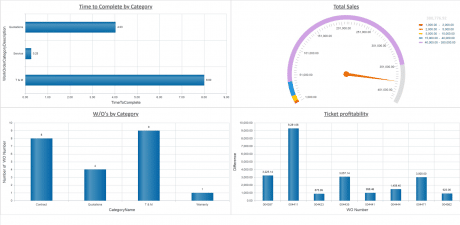Last Updated on July 17, 2023

Construction projects are one-of-a-kind, lengthy and complex. They have timelines that are measured in years, and this leaves much room for error. How do you organize so many chaotic variables into a high-quality construction project that has a steady and harmonious progression?
Enter process management. This methodology works to ensure that repetitive tasks, or parts of a project, are efficient and effective. This, in turn, can help make the entire organization more cost-efficient and, best of all, predictable.
Process management is important because it helps to improve overall operations. When process management is properly executed, you can:
- Take on less risk
- Minimize your expenditures
- Gain better control of workflows
- Pinpoint operational deficiencies
- Get insights on making business decisions
To sum it up, process management has the following critical functions: Planning, organizing, and controlling processes that shape up the construction project.
In this article, we have outlined the steps you can take to start mastering process management, and in turn, make sure that your projects run smoothly, on time, and within budget.
Project Initiation (Steps 1 – 2)
The first stage of the project management life cycle is project initiation. At this stage, decisions are made as to whether the project is viable, and which benefits it is going to yield. To maximize benefits and minimize costs, having a clear objective is important.
From here on out it’s time to identify key steps in the effective project initiation process.
Step 1. Determine the Project Feasibility
This step helps you determine the possibility of the project’s success. You can do this by identifying high-level constraints and assumptions about the project, and concluding whether benefits outweigh the risks. This helps you determine whether the company should spend its technical, financial, and human resources on this particular project.
Let’s suppose that the project has been deemed worthwhile. The next step ensures that the planning begins properly.
Step 2. Create a Project Initiation Document (PID)
At this point, the “eager-beaver” in you may want to hit the ground running and begin assigning tasks to the team. It’s important though, no matter how tempted you are, to instead, create a Project Initiation Document (PID). This step is crucial in helping you succeed from an early stage.
A good Project Initiation Document defines:
- The project scope
- Basic information of the project: context, team, and collaboration.
- Management and overall success criteria.
A living document that the team can refer back to, PID is important both as an internal guide and for external stakeholders.
The Project Initiation Document (PID) is the second step to ensure your project takes off in the right direction. It sets the tone, context, expectations, and constraints on which you will expand in the next steps of your project planning.
Project Planning (Steps 3-7)
Once you understand the full project scope, expectations, and potential roadblocks, it’s time to break the gigantic task ahead into smaller, digestible chunks. During the planning stage, start by identifying all required construction activities, then move ahead and build the construction schedule, and finally, move on to devising your team structure. The construction plan lists the activities required and the timeframe for each phase of the construction process.
The benefits available to you are numerous. Among them:
- Improvement of work efficiency.
- Reducing costs and saving time will effectively distribute resources.
- Enhancing team capability, ensuring project success within schedule constraints and budget.
Here are the essential steps to take during this stage to help your project continue in the right direction.

Step 3. Clearly Identify Project Scope
The first step in construction process planning is defining the scope of work. This involves listing all construction obligations, as well as work activities that will be performed by contractors, subcontractors, and suppliers. Everything is then described in an agreement or contract, called the scope of work. This document should also include:
- Definitions of contract objectives and any special requirements of the project
- List and descriptions of tasks, limitations, and duties that must be completed to reach desired results
- A list of standards and regulations, the legal requirements, and any changes to the first contract
- A clear outline of the payment schedule, payment information, and deliverables
The project scope lays out the goals of the project, along with the budget and the tech specifications. This is also a great place to establish the different milestones.
Once you have defined the project scope, you are ready to move on to the next important step.
Step 4. Develop a Construction Project Management Plan
Whether you are starting new construction or you are dealing with renovation or rebuilding, a construction project management plan is essential for completing a project on time and within budget. In essence, it is a blueprint that drives the project from conception to completion.
Depending on your project scope, you may find yourself using one, or more, of the following approaches as you create your construction project plan:
- Strategic plan: In this kind of plan, you outline the overall project goals. A strategic plan provides a high-level overview of construction project objectives
- Operational plan: This plan is more detailed and gets into how each part of the project will work
- Schedule: This plan stems from the operational plan, using a time scale with milestones and benchmarks to provide a timeframe for project completion
A significant payoff of the construction project management plan is that it helps avoid communication gaps between teams and helps you design schedules. During the project, your plan will likely be modified to accommodate changes as they arise, including weather conditions, materials delays, adjustments in the workforce, or technical difficulties. Experience tells us that having a plan doesn’t mean everything will go according to it – but it does help guide us to success!
Now that we’ve put together a plan, it’s time to identify the risks!
Step 5. Determine Potential Project Risks
Construction always comes with risks, no matter how complex or simple the project is. That’s why timely recognition and management of risks are imperative.
When risks become reality, they cause costly delays and can even derail an entire project. Being able to accurately identify, assess, control, and monitor all risks is imperative to your project success, and worth the planning time.
The earlier you identify the potential construction risks, the more time and resources you will have to mitigate them. As the risk is defined, it’s important to map out possible solutions based on several scenarios. Here are some common construction risks for you to consider:
- Poorly defined project scope
- Changes in orders that were not managed properly
- Unexpected increases in building material costs
- Labor shortages
- Damage to equipment and tools
- Natural disasters that affect the construction site
- Safety hazards that lead to work accidents and injuries
To minimize negative impacts on a construction project’s cost, time, and quality goals, a good risk management plan will include a thorough assessment of what might go wrong and how you can resolve it. There should also be a clear understanding of who is responsible for managing specific types of risks.
Create a Work Breakdown Structure (WBS)
Once you have finalized the project management plan, it’s time to divide and conquer your project to get things done quickly. Work Breakdown Structure (WBS) does exactly what the name implies: it breaks down the massive amount of work to do into smaller tasks. Think of this helpful diagram (below) as a “hierarchical decomposition of the work to be executed by the project team,” as defined by the Project Management Body of Knowledge (PMBOK).
The WBS document organizes the work into manageable sections and visually presents the key project deliverables in a Gantt chart format. This is an essential planning and scheduling tool that helps to plan, execute, and monitor the project. The chart itself resembles a family tree or an organization chart. At the very top of the chart, the completed building (the parent) appears. Each layer beneath the parent breaks the project down into tasks (children).
The key principle of creating the Work Breakdown Structure is called the 100 Percent Rule. According to the rule, all construction work at the child level must equal the total work represented by the parent.
There are two types of Work Breakdown Structure: deliverable-oriented and process-oriented. Deliverable-oriented WBS is suitable when:
- You can break the project into more manageable deliverables
- Your project is not based on planning generic activities.
Process-oriented WBS, on the other hand, is more appropriate when:
- Your process can be organized into steps, work phases, or functions.
- The description of each phase can be done in verbs rather than nouns, e.g., “create” rather than “creation”, “build” instead of “building”.
Let’s take a closer look at the first type of WBS. A deliverable-oriented (or product-oriented) WBS is focused on tangible deliverables, not processes. The hierarchy demonstrates what you will build rather than how you will build it:
A deliverable-oriented WBS has many advantages:
- Simplified cost estimating.
- Presentation of the total work scope.
- Clarified relationships among elements.
- Usefulness during all project phases.
- Easy changes can be made as your project grows.
Another type of WBS, the process-oriented one, goes by a handful of names – phase-based, process-oriented, task-oriented, or activity-oriented. It focuses on the processes required to complete the project. The project chart is divided into component activities in chronological order:
The main goal of a construction work breakdown structure is to make the project more manageable by breaking it into smaller sections. This allows the next steps of your process management to align better with the main goal of the project.
Step 6. Procurement of Labor, Materials & Equipment
You have now planned your construction project down to the smallest details. It’s time to make it a reality. Next, you need to obtain the equipment and materials necessary to complete the project. This may be completed by the general contractor, subcontractors, specialty contractors, specialized equipment suppliers, or landscapers.
As part of your construction process management, procurement involves all the steps required for the materials to be selected, ordered, invoiced, paid for, and delivered to the site.
A procurement process is key to the financial efficiency of your construction business. Not only will you end up paying the right price for goods and services, but delivery times will also be minimized and you will establish yourself as a partner that vendors want to work with.
As you look to set up a procurement process or update an existing one, there are seven steps you may want to consider:
- Identifying the materials and equipment required to complete the project: Refer to the project scope and project management plan to make the right estimates.
- Build a list of suppliers: Going with the wrong supplier could have a knock-on effect across your entire business.
- Negotiating contract terms with the selected supplier: This step is important, as you want to agree on fair terms and prices.
- Finalizing the purchase order (PO): Your PO document should outline the description of the goods, total costs and quantity, and the approval of workflow.
- Receiving the invoice and processing the payment. Paying invoices promptly saves you from incurring extra costs for being late.
- Delivery and audit of the order: Double-check the order upon arrival – the last thing you want is to start working on a job and realize that the required supplies haven’t been delivered.
- Maintain an accurate record of invoices: your Accounts Payable system will help keep all your invoices in order and help you understand if you’re overspending or sticking to your budget.
A financially sound procurement process can help you control costs and reduce scope change. This becomes especially important as you move on to the next step in your construction process management.
Step 7. Select the Best Bid for Your Particular Project
Finding quality labor is a balance of trust and cost, and identifying bids comes with its challenges. This part of the process has several approaches to choose from, and we’ve outlined them here:
Open Bid vs. Closed Bid
An open bid, also known as an unsealed or competitive bid, is a transparent bid that is available for all other bidders (contractors, suppliers, or vendors) to see. In construction projects, the lowest bidder often gets the contract. Among the benefits with open bid selection are:
- More choices as more bidders are attracted.
- Real-time quotes.
- Reduced complexity.
During closed bidding, also known as sealed bidding, bidders submit bids independently, in response to an invitation to bid. The highest bidder wins and pays his bid. During this type of bidding, suppliers cannot see all competing offers, and the bid is only visible to the project owner. This not only creates a level playing field for all bidders but also helps the buyer identify the best offer based on criteria other than the lowest price. Other advantages to consider:
- May help ensure unrestricted and honest competition.
- Bidders can include all relevant bid information.
- All bids are opened at the same time, so the conditions are fair.
Low-Bid Selection
This simplest procurement procedure relies only on selecting the contractor that provides the lowest price. In addition to low price, you can expect the following benefits:
- Straightforward process.
- Doesn’t consume a lot of resources.
- The awarded job goes only to the contractor who meets your criteria.
While this bidding procedure is the most commonly used one, it may not be suitable for large complex projects that include multiple risks. You may want to consider alternative methods for such projects.
Best-Value Selection
During the Best Value Selection process for construction services, the evaluation considers not only the total construction cost but also other non-cost factors including the background of the bidders. Here are some benefits of this bidding model:
- Open and fair criteria outline encourages fair competition.
- Non-cost factors are also considered.
- You get very competitive bids and as a result, expect more value.
If you can afford to do so, best practice suggests building a list of pre-approved subcontractors and then submitting bid requests only to companies on this list. This will save you time as you deal with less qualified contractors when the bids come in.
Qualification-Based Selection
This is perhaps the most comprehensive bid evaluation strategy. In this method, the owner chooses a contractor based on their qualifications, experience, and reputation. The benefits of this method include:
- High-quality offers from pre-qualified bidders.
- Clear outline of expenses and fees.
- Can be used to offer bids for creative services such as building design, landscaping, or marketing.
The evaluation and selection of contractors for awarding construction contracts is a vital part of the construction process. A lot of headaches – as well as time and money – can be saved by creating processes around bidding in order to create more efficiency, and ultimately provide a competitive advantage.

Project Execution (Steps 8-9)
Now that you have put your procurement method and bid evaluation strategy in place, it’s time to move forward with your construction project. Here are important steps you may want to consider adding to your project execution.
Step 8. Monitor Project Progress
When the project is underway, your job is now to ensure that everything is moving according to plan. Construction progress monitoring ensures that construction progress is, first of all, consistent with the funds requested from the contractor, and second, that the work completed is consistent with construction plans and specifications.
Here are some of the steps that are involved in project progress management:
- Establish the level of completion of the construction work, according to the construction schedule
- Evaluate the adequacy of material and workmanship
- Identify and report construction changes and potential or pending order changes
- Check quality control measures conducted by third-party agencies, architects, and qualified construction inspectors
- Evaluate the capacity of the labor on-site, and address any potential work hindrances or stoppages
- Estimate the sufficiency of funds remaining to complete the project, if requested
Without effective construction project monitoring, a project manager can never determine if the project is meeting deadlines and staying within the budget. While site inspections provide valuable information, it’s important to consider the details that may be missed, overlooked, or too time-consuming to collect, such as the percentage of work completed. For those details, it’s worth considering construction project management software to help keep your projects on time, and your costs in mind.
Step 9. Effectively Manage Project Changes
Changes are unavoidable and can happen at any time over the course of a construction project lifecycle. The key here is to adapt to these changes and work out how best to accommodate them. Here are five actionable tips to deal with changes in your construction project:
- Stay on top of the details. Any change in the project should be communicated via a change request. Ensure that all change requests submitted are clearly understood by both parties.
- Understand if the scope of work is changing. Not all changes demand additional work. Find out if the project scope is being increased or decreased.
- Assess the impact on the construction project’s key factors such as time, documentation, quality, budget, and resources. For example, design modifications may extend the duration of the project by ten days. In such a case, it’s important to assess whether available resources need to be extended and what impact the change will have on the planned budget.
- Set aside contingency funds. These funds should be set aside from the very beginning to accommodate possible changes without impacting the budget.
Many factors such as resource allocation and finances can change the lifecycle of a project. Having processes put in place will help you be prepared for changes as they arise – we all know that projects do not always follow the plans that were designed initially.
Project Closure (Steps 10-12)
“I just love doing project closeout,” said nobody, anytime in the history of mankind.
Yet this final stage of the project is very important – and lengthy, too. An analysis of 39 projects by MSU found that the average length of closeout was 284 days. During this time, you must consolidate a list of anything left incomplete and assign a team member to complete these items.
It’s not as simple as a teacher waiting for students to submit their quizzes. The larger the project, the more construction documents there are to collect, specifically each subcontractor will be submitting their own set of documents, which may require edits. After that, design and construction teams assemble the handover package, also known as “handover document,” “closeout package,” or “turnover package”.
The final step of project closeout is delivering the handover package to the client. Only when work has been completed, final retainage is released and the general contractor can be paid. To ensure your relationship with the client remains strong and their business is repeated, the following steps are vital during the successful closeout:
- Planning the closeout, starting from the early stages of the project
- Determining client handover requirements and adjusting documentation as needed
- Delivering a complete, well-designed, and accessible handover package
Ultimately, the satisfaction of the owner determines the overall success of the project. You must ensure all of their requirements have been met and typically provide a warranty period to make that arrangement official and binding.
Step 10. Evaluate Successes & Failures
Timely delivery within budget and a happy client – these are just some of the signs your construction project has been a success. If you’ve been tracking your work accurately, and have timely reporting, you should have a good gauge of project success at all times. Ongoing reporting, such as work-in-progress reports, provides a learning opportunity in the moment and for your future projects. Consider the following criteria:
- Scope: To get a true measure of your project’s success, you will want to assess if it achieved its objectives within the agreed timeframe
- Schedule: This metric is easy to measure. Did you hit the milestones on time? Did your project get delivered on schedule? The answers are self-evident
- Budget: Another metric that is relatively simple to determine. Did you manage to complete your project within budget? Being able to deliver the budget is one of the truest signs of success
According to Charles R. Swindoll, life is 10 percent what happens to you and 90 percent of how you react to it. Failure happens! It’s worth noting that, according to a 2019 KPMG, AIPM, and IPMA global survey:
- Over 50% of construction professionals report one or more underperforming projects per year
- Only 19 percent of organizations deliver successful projects
- Only 30 percent of organizations deliver on time
- Only 36 percent deliver projects on budget
- Only 44 percent deliver projects that meet the original goal
The closeout stage is the perfect time to assess the factors that contributed to the project’s successes and failures. A construction project can fail for many reasons. Let’s examine the most significant ones:
- Lack of quality project leadership
- Poorly defined project scope and work breakdown structure (WBS)
- Ill-defined project procurement and/or delivery schedules
- Overlapping task dependencies
- Inefficient resource scheduling that leads to resource shortages
- Cost overruns and schedule delays
These can be optimized with a set of processes in place. While it’s impossible to avoid issues and problems in a project, having a tool (like construction project management software) can help you navigate common pitfalls.
Step 11. Create a Project Report
Once you are finished analyzing project successes and failures, it’s time to sum things up. The final report will officially close out the project. This document should outline each of the construction process management steps and provide insight into each stage of the process. Use the project report to:
- Demonstrate that all parts of the job are complete
- List any problems you’ve identified
- Offer suggestions to improve future performance
You can present the project report to the upper management and refer to it in future projects to enhance your processes and performance.
As the saying goes, projects are remembered not by how they start but by how they finish. Construction project closeout is often overlooked but it can have a huge impact on your overall success.
Step 12. Choose the Best Software to Improve Your Construction Process Management
In construction, things can get complicated very quickly. These days, however, establishing efficient construction processes is easier today than ever before, thanks to the rise of technology. A construction-focused project management software such as Jonas Construction Software makes your management easier and helps minimize costly losses and delays.
Find out how Jonas Construction Software builds a solid foundation for your process management with organized timelines for accounting, materials tracking, contractor management, and document management capabilities.







